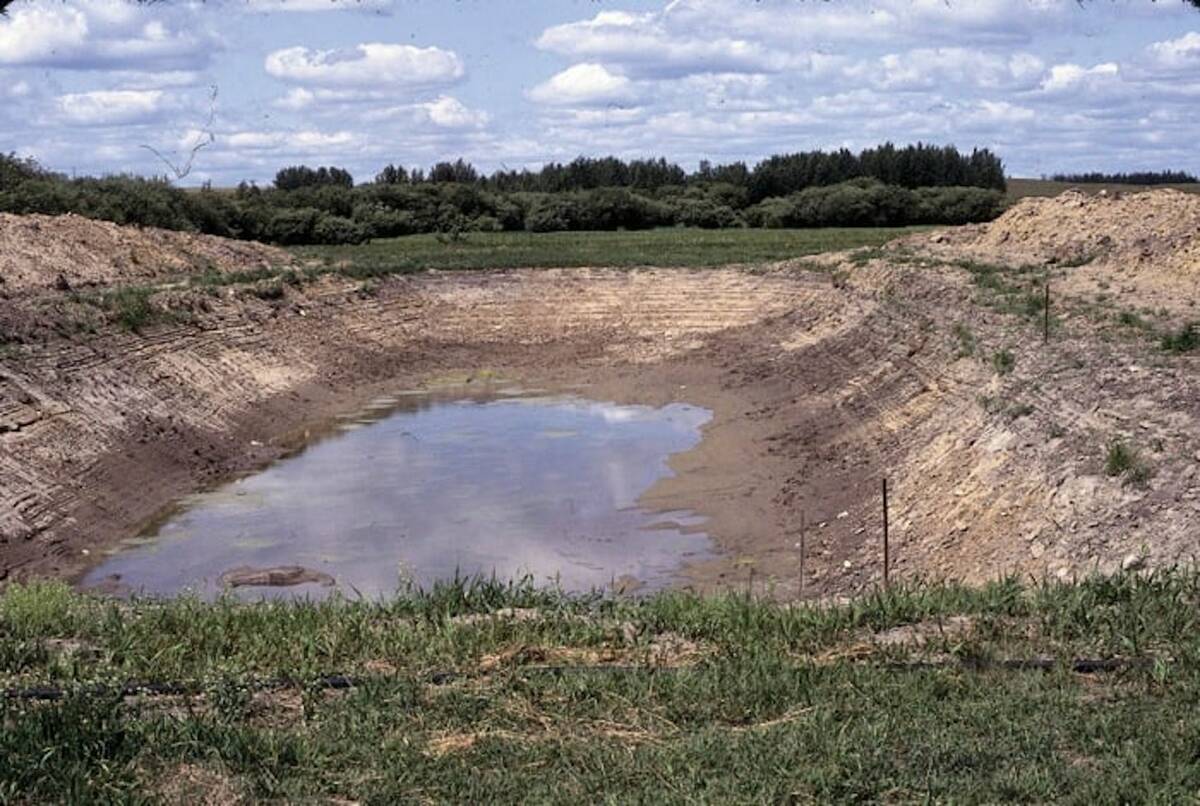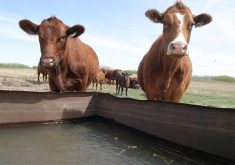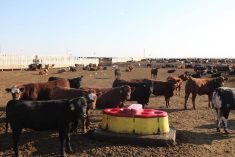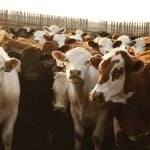Canadian beef is starting to flow back into the United States.
Two 16,000 kilogram truckloads, which left Lakeside Packers in Brooks, Alta., on Sept. 10, were the first shipments to the U.S. since that country banned beef exports from Canada on May 20 following the announcement that bovine spongiform encephalopathy had been found in an Alberta cow.
A second shipment from Cargill Foods in High River, Alta., received clearance on Sept. 12 when five truckloads entered the U.S. By Sept. 14, Cargill expected to ship 30-35 truckloads of chilled and frozen primary cuts to company facilities in the U.S., where it will be redistributed.
Read Also

Dry summer conditions can lead to poor water quality for livestock
Drought conditions in the Prairies has led to an decrease in water quality, and producers are being advised to closely monitor water quality for their animals.
“It’s a good start,” said company spokesperson Rob Myeijer.
The Canadian Food Inspection Agency cleared the import permits on behalf of the U.S. Department of Agriculture.
“The permit gives us the green light to do business,” Myeijer said. “A copy of the permit goes with each load.”
So far the U.S. is accepting only boneless beef from cattle younger than 30 months, boneless veal and liver.
The Americans agreed to accept boneless meat at the end of August but clarification on plant operations was required to get beef moving again. They originally said they would take only meat from plants handling cattle less than 30 months of age.
Rules for export eligibility were clarified Sept. 4, stating each plant must submit its procedures to a CFIA veterinarian. Each plant must segregate older cattle from youthful animals, said CFIA spokesperson Larry Miller.
The only acceptable proof of age is dentition, where vets check the animals’ mouths for the presence of permanent teeth.
More exports are expected but the CFIA did not name eligible plants.
“We have endorsed export documents for products to go forward,” Miller said.
While Russia, Mexico and the Philippines have offered to take Canadian beef, none have submitted their guidelines, he added.

















